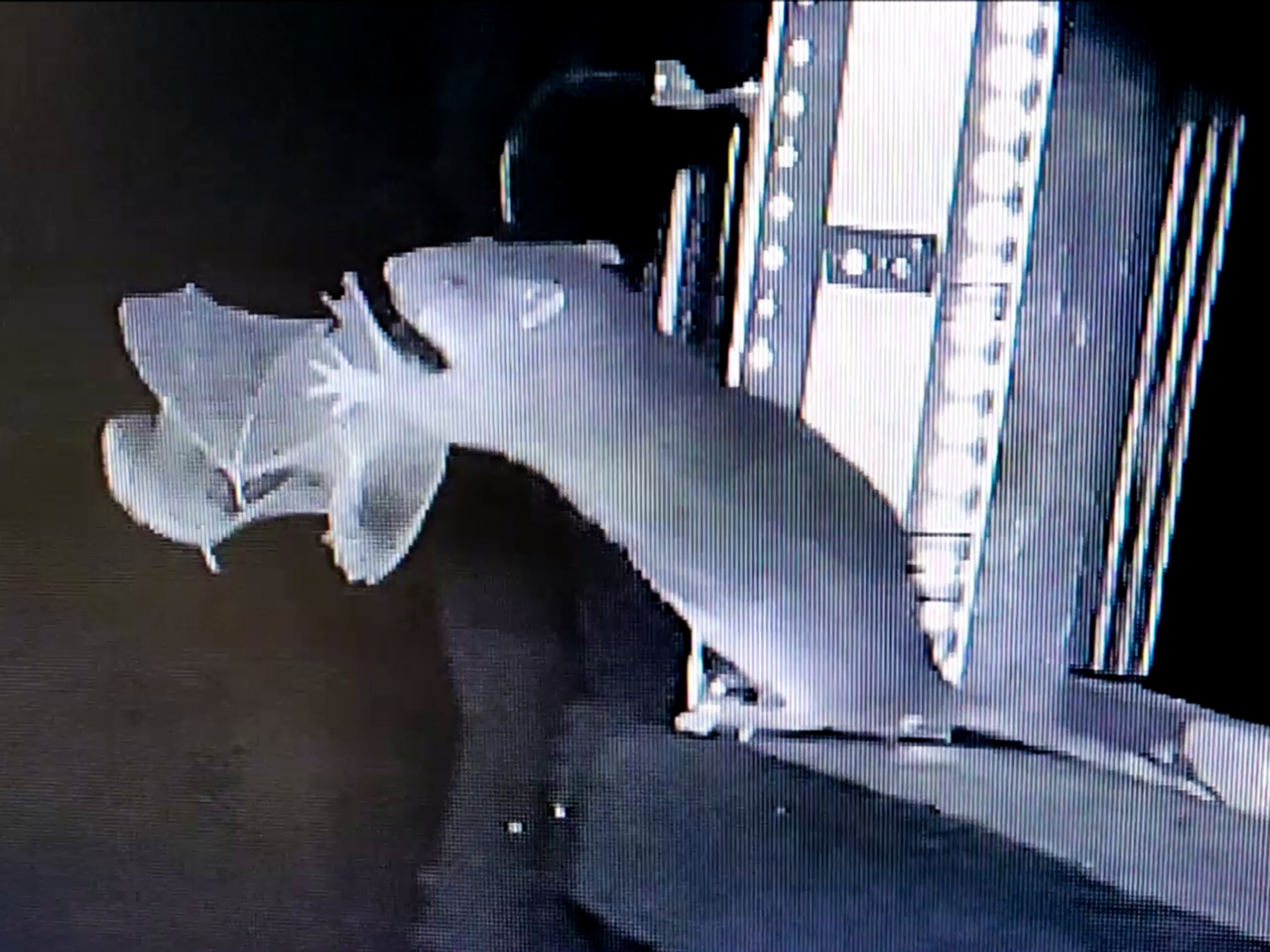
7 Ways Bats Are Just Like Batman
For one, these dark knights help the less fortunate.
When it comes to public awareness, bats often fly under the radar—just like superheroes.
With the Lego Batman movie premiering this weekend, Weird Animal Question of the Week got to thinking: “In what ways are bats really like Batman?”
They Wear Masks
Of the nearly 1,400 known bat species, the wrinkle-faced bat of Colombia, Venezuela, and Mexico is “the weirdest bat in the world”—at least to Rob Mies, director of the Organization for Bat Conservation.
That's because the mammal makes its own mask, says Mies, a self-acknowledged “Alfred to bats.”
“It takes its thumbs and pulls this chin flap over its face so it can camouflage itself while it sleeps during the day,” he says. The mask (see video below) is partly translucent, “so it can open up its eyes to look for predators.”
They "Adopt" Orphans
Batman had Robin, aka his young ward Dick Grayson. Nursing vampire bats, found in tropical Central and South America, will sometimes feed pups that aren't their own, says Mies.
Though little is known about such behavior, it may benefit the bat colony—pups that survive increase the colony's size, says Gerald Carter of the Smithsonian Tropical Research Institute in Panama.
They Clean up the Streets
Bats “eat more moths, beetles, gnats, flies, and mosquitoes than anything else out at night,” Mies says. Many species can catch a thousand mosquito-size insects per hour. (See "This Book Drives a Wooden Stake Into the Mythology Of Bats.")
These flying eating machines are crucial to keeping both a healthy ecosystem and economy, as many of those insects are agricultural pests. Without bats, the U.S. agriculture industry could lose as much as $3.7 billion a year, according to a 2011 study in the journal Science.
They Have a Sense of Justice
Vampire bats share their food, regurgitating a blood meal for others who did not get to feed. But they’re picky about who they share it with.
“They’ll remember who was more generous with them in the past,” and will "share more readily" with those bats, says ecologist Merlin Tuttle, research fellow at the University of Texas at Austin and founder of Merlin Tuttle's Bat Conservation.
They’re Smart
Bats have “very sophisticated social systems,” Tuttle says, and can remember relationships even when their colony is reorganized.
A 2011 study showed three captive-born bats could recognize where people were pointing, which is rare among animals.
Once, in Malaysian Borneo, Tuttle was trying to tame some Hardwicke's woolly bats by hand-feeding them mealworms. One bat realized that if he bumped Tuttle on the nose, as seen in this video, Tuttle would give him a worm.
“That’s a bat training me, which is pretty damn remarkable,” Tuttle says. (Related: "6 Bat Myths Busted: Are They Really Blind?”)
They Have Built-In Superpowers
Bats' ability to echolocate—or use natural sonar to detect objects—is so powerful they can hear texture, Mies says.
For instance, these sensitive creatures can tell a brick wall, which they can land on, apart from a glass one, which they can’t.
And Brazilian free-tailed bats don’t need a Batmobile.
In 2016, a study found these bats can fly horizontally at 100 miles an hour—a ground-speed record for animal flight. Scientists put small radio tags on the animals and then tracked them via airplane.
"While the bats do not need a Batmobile to travel at these speeds, we did use an automobile to evaluate the precision of our airplane tracking," study leader Gary McCracken, an evolutionary ecologist at the University of Tennessee at Knoxville says by email.
They Have an Arch Nemesis
The villain many North American bats face is a deadly fungus called white-nose syndrome. The U.S. Geological Survey estimates that 80 percent of the bat population in the entire northeastern U.S. has been lost to the disease in recent years.
“The fungus wakes them up during hibernation and they use up all their body fat,” Mies says. If they fly out of their caves during winter, “there’s no food, and they starve and they freeze.” (Read how a bacterium may help stop this killer fungus.)
Humans have also been bat adversaries throughout history, both by killing them indiscriminately and spreading false rumors (who hasn't heard that bats supposedly try to nest in your hair)?
But we can redeem ourselves by helping out these dark knights, for instance by planting gardens that attract nighttime insects or putting up a bat house.
Have a question about the weird and wild world? Tweet me, leave me a note in the comments, or find me on Facebook. Weird Animal Question of the Week answers your questions every Saturday.





